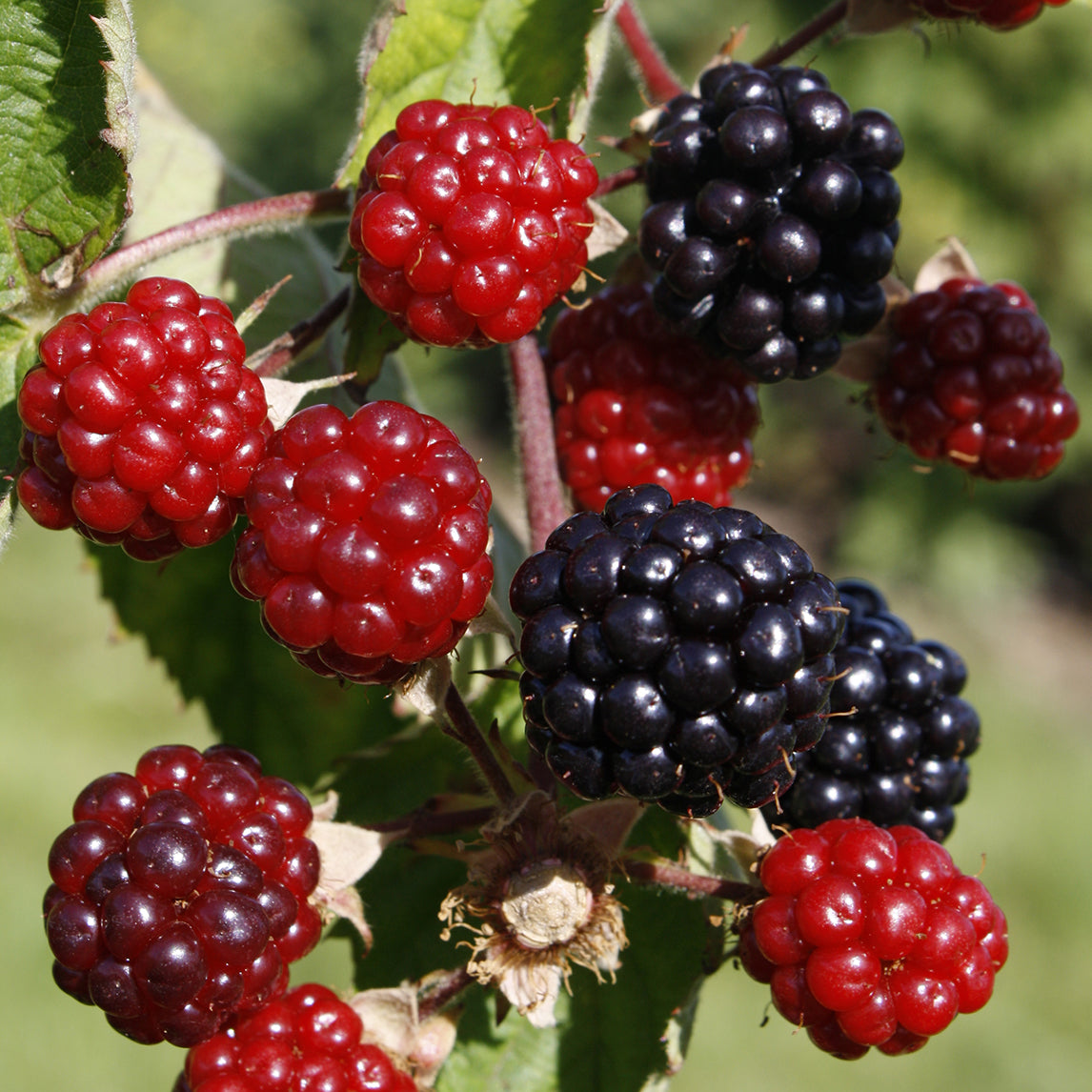Blackberry ‘Loch Ness’
Unlike wild brambles, this compact, upright variety is easy to manage in small spaces or along a trellis, making it ideal for backyards and even pots. With excellent disease resistance and high yields, it’s a reliable performer season after season.
Plant ‘Loch Ness’ and enjoy fresh blackberries straight from your garden—without the scratches!
Climate:Best suited to cool, temperate, and Mediterranean climates. Performs well in most regions with cold winters and mild summers.
Position:Full sun for best fruit production. Can tolerate partial shade but may produce fewer berries.
Soil: Prefers well-drained, fertile soil rich in organic matter. Add compost and well-rotted manure before planting. Avoid waterlogged areas.
Planting: Space plants 1.5–2m apart in rows, with at least 2m between rows. Dig a hole twice the width of the root ball and plant at the same depth as in the nursery pot. Water well after planting and mulch around the base to retain moisture and suppress weeds.
Support: ‘Loch Ness’ has semi-erect canes that benefit from support. Train along a trellis, wires, or fence for easier harvesting and airflow.
Watering: Keep soil moist, especially in the first year and during fruit development. Deep, consistent watering encourages juicy berries.
Feeding: Apply a balanced organic fertiliser in early spring. Top up with compost or well-rotted manure annually to maintain soil fertility.
Pruning: After fruiting, cut old canes to ground level to encourage new growth. Tie new canes onto supports to keep the plant tidy and productive.
Harvesting: Fruits ripen from mid to late summer. Pick when fully black and plump for the best flavour. Store in the fridge or freeze for later use.
Pests & Diseases: Generally resistant to common pests and diseases, but watch for birds (netting may be needed) and occasional fungal issues in humid climates.

